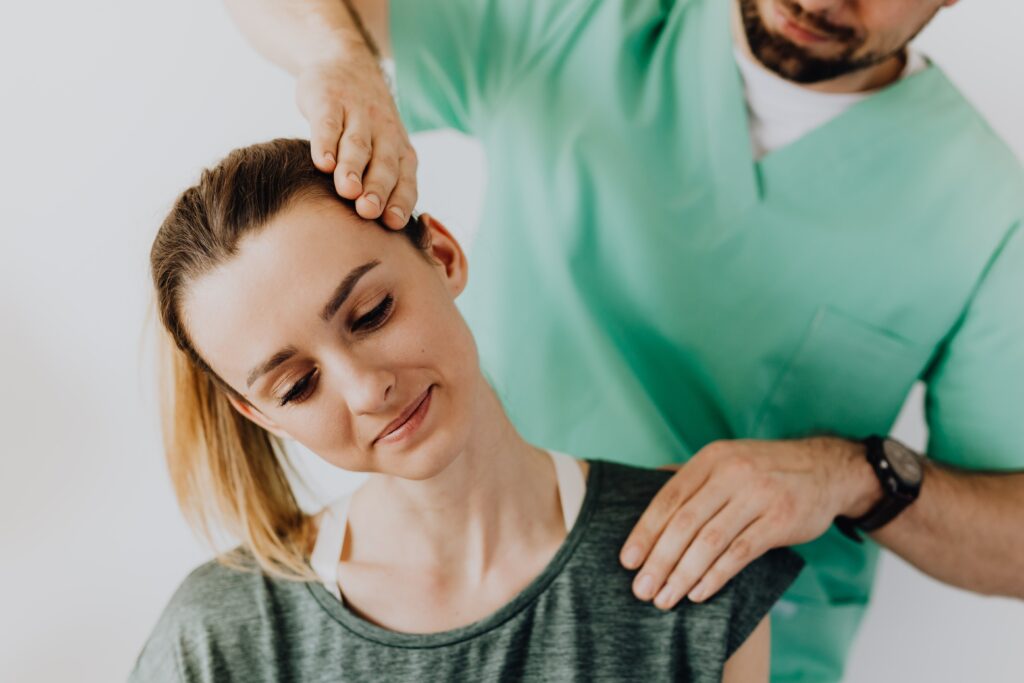How Physical Therapy Helps Adult Torticollis (Wry Neck)
Introduction
Wry neck is a condition that results from weak or tight muscles in the neck, causing pain and stiffness. This condition may occur due to poor posture habits, lying in uncomfortable positions, or certain diseases such as arthritis or multiple sclerosis.
To manage the symptoms of a wry neck, people can opt for physical therapy programs. These sessions work on improving the posture of a person and strengthening the neck and shoulder muscles. By doing so, people with wry necks can experience relief from the pain and stiffness and restore normalcy to their lives.
What To Expect at Physical Therapy
At your first physical therapy appointment, your condition will be evaluated through specific tests and measurements of your range of motion and strength. Additionally, you may be asked about your daily activities that could be causing pain or discomfort. This information is used to construct a personalized treatment plan for you. Depending on the severity of your case, you may undergo manual therapy techniques like soft tissue massage or joint mobilizations, therapeutic exercises, postural training, education on proper body mechanics, stretching programs, or gait training (if you can walk). Other modalities such as heat/ice treatments and ultrasound could also be used to aid in your recovery.
Physical therapy is a unique and targeted approach to individualized care. Treatments are designed to help you regain pain-free mobility and improve your quality of life. You’ll work with a highly trained therapist who will help guide you through the process of healing and the road to recovery.
Types Of Exercises
Your physical therapist will design a personalized exercise program tailored to your specific needs. Some common exercises used for a wry neck include:
- Neck retraction: This exercise focuses on gently pulling the chin towards the chest while keeping the spine straight. It helps improve posture while promoting better alignment in the spine.
- Shoulder blade squeezes: This exercise strengthens muscles around the shoulder blades which help stabilize the shoulder girdle when performing activities like lifting objects overhead.
- Wall angels: Stand with your back against a wall with elbows bent forming 90-degree angles at each side; move arms up towards the ceiling pushing against the wall until elbows reach a fully extended position; hold for 10 seconds before returning arms back to starting position; repeat 10 times. This exercise helps strengthen shoulder girdle muscles responsible for head/neck control during movement activities such as reaching overhead.
- Chin tucks: Begin by standing tall with feet hip-width apart; slowly pull chin straight back towards the chest while keeping eyes forward; hold for 5 seconds before releasing; repeat 10 times throughout the day whenever possible to promote good head/neck alignment during daily activities.
- Upper trapezius stretches: Sit in a chair with feet flat on the floor; pull shoulder backward while holding arm close to the body; hold the stretch for 30 seconds before releasing; repeat 3 times on each side throughout the day whenever possible to increase flexibility in upper trapezius muscle group responsible for head/neck mobility.
How Long Does Recovery Take?
The amount of time it takes to recover from a wry neck depends greatly upon how severe one’s case is as well as their commitment level to following through with prescribed home exercises and stretches directed by their physical therapist. Generally speaking, however, it may take anywhere from 4-6 weeks when combined with regular physical therapy sessions (2-3 times/week) depending upon one’s individual progress over time.
Conclusion
Physical therapy plays a significant role in treating adult torticollis (wry neck). This condition can be distressing, causing pain and restricting range of motion. With guidance from experienced professionals and a little patience, patients can achieve significant improvements in their condition within 4-6 weeks. Consistently following the prescribed exercises will help alleviate pain, restore motion, and prevent future injuries or recurrences. In addition to treatment, physical therapy can also educate patients on how to prevent this condition from reoccurring and how to maintain healthy neck habits.

